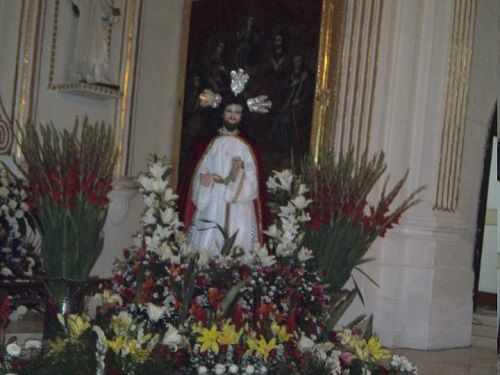
Excelente
614 Views
Inside the Parroquia del Divino Salvador in Tzompantepec, it was redecorated at the beginning of this century, but on its left side there is a painting of "souls" made by the artist Antonio Caro in 1681 and an anonymous one, where the baby Jesus is represented accompanied by his parents and grandparents. The atrium of the temple is still used as a cemetery and is surrounded by a wall of inverted arches.
Tzompantepec is a municipality in the state of Tlaxcala, its name comes from Nahuatl and means: "place to keep or where skulls are kept", it has beautiful buildings such as the Parish of the Divine Savior, its construction dates back to the 19th century, the Temple of San Andrés was built in the 18th century, the Temple of San Juan, its construction dates back to the 18th century, as well as its patronal festival, the patron saint San Salvador is celebrated on August 6 or 7, the main day.
In the Municipality of Tzompantepec, the groups of huehues dancing quadrillas are an essential part of the carnival celebrations. The musical accompaniment is not restricted to a single musical genre and its origin is diverse, they regularly resort to the "greatest hits of the moment", songs or melodies popular on radio and television stations. The carnival costume includes shorts and a multicoloured velvet shirt, a front shirt with religious motifs (embroidered), a carved wooden mask, castanets and black shoes. The patron saint San Salvador is celebrated on the 6th or 7th of August, the main day. At 5 o'clock, "Las Mañanitas" in honour of the patron saint are sung by the town's inhabitants, accompanied by a mariachi. At the same time, a commission of volunteers goes to the outskirts of the town to receive an image of San Salvador, who will receive the honours that were planned for his day.